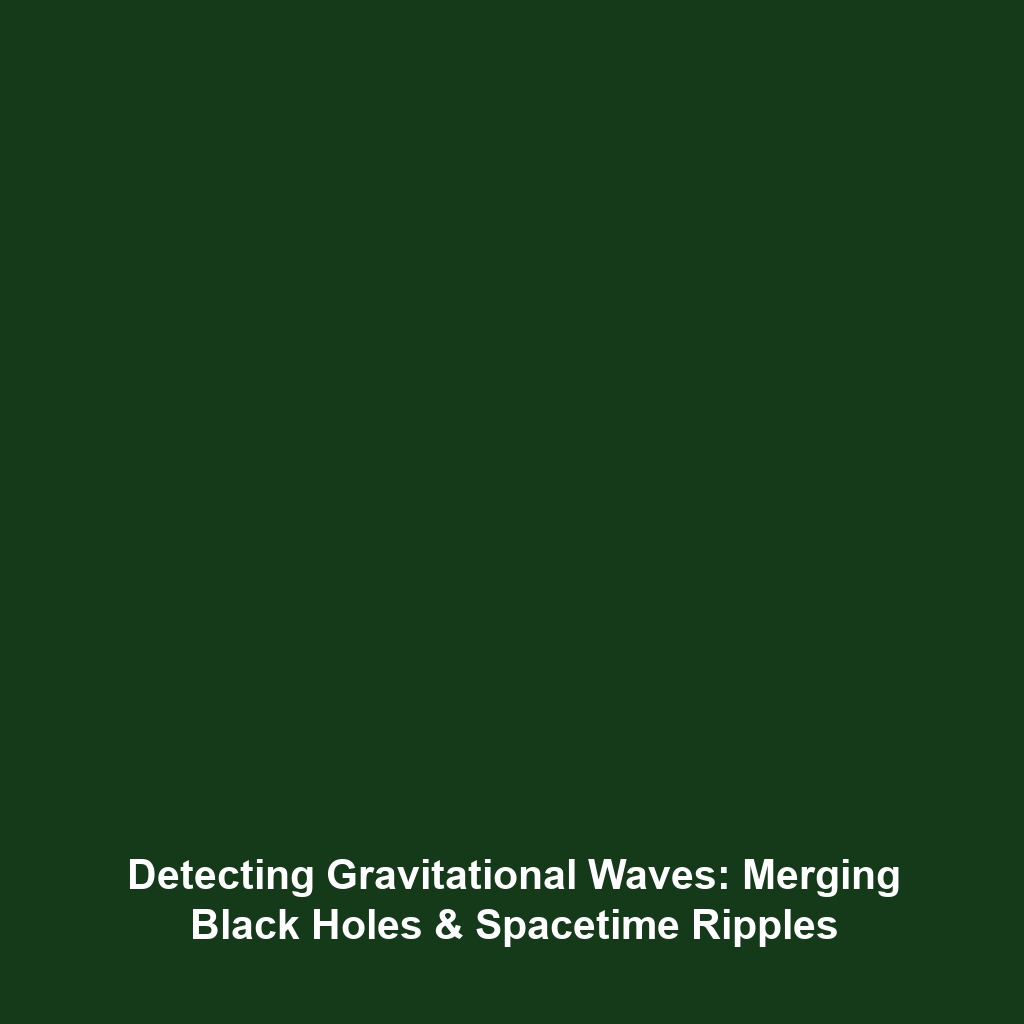How Black Holes Bend Spacetime and Affect Light and Matter
Black holes are one of the most fascinating and mysterious phenomena in the universe. Understanding how black holes bend spacetime and affect light and matter is crucial for astronomers and physicists alike. This complex interaction not only has implications for the study of black holes but also enhances our comprehension of the fundamental laws of physics. From Einstein’s theory of general relativity to modern astrophysical observations, the effects of black holes on their surroundings offer profound insights into the nature of our universe.
Key Concepts
To grasp how black holes bend spacetime and affect light and matter, it is essential to understand a few key concepts:
Spacetime Fabric
In Einstein’s theory of relativity, spacetime is depicted as a four-dimensional fabric that combines the three dimensions of space with the dimension of time. Black holes have an immense gravitational pull that warps this spacetime, creating deep gravitational wells. This bending of spacetime is significant as it influences the paths of light and matter in its vicinity.
Event Horizon
The event horizon is the boundary surrounding a black hole beyond which no light or matter can escape. This critical feature of black holes reveals the limits of our observable universe, offering a unique perspective on the nature of gravity and light.
Gravitational Lensing
Gravitational lensing occurs when the bending of light around a massive object, such as a black hole, alters the appearance of objects behind it. This phenomenon not only helps in studying black holes but also serves various applications in astrophysics, including the detection of distant galaxies.
Applications and Real-World Uses
The principles behind how black holes bend spacetime and affect light and matter have several significant applications:
- Astrophysical Observations: Utilizing gravitational lensing, astronomers can study galaxies located billions of light-years away, gaining insights into the structure and evolution of the universe.
- Testing General Relativity: Experiments involving black holes provide critical tests for Einstein’s theories, validating or challenging our understanding of fundamental physics.
- Technology Development: Concepts derived from the study of black holes have inspired advancements in technology, including imaging techniques used in medical fields.
Current Challenges
Despite advancements in our understanding, several challenges remain in studying how black holes bend spacetime and affect light and matter:
- Observational Limitations: Direct observations of black holes and their effects are constrained by their nature; current technology can only infer their presence indirectly.
- Theoretical Discrepancies: There are ongoing debates among physicists regarding the exact nature of black holes and their implications for quantum mechanics.
- Data Interpretation: The complexity of data obtained from gravitational waves and light distortion requires sophisticated models for accurate interpretation.
Future Research and Innovations
The future of research concerning how black holes bend spacetime and affect light and matter is promising, with several innovations on the horizon:
- Advanced Telescopes: Next-generation telescopes, such as the James Webb Space Telescope, will enhance our ability to observe black holes and analyze their effects on surrounding matter.
- New Theoretical Models: Researchers are working on new frameworks that could unify general relativity with quantum mechanics, potentially transforming our understanding of black holes.
- Gravitational Wave Astronomy: As detection technology improves, the study of gravitational waves from black hole mergers may reveal new insights about their influence on spacetime.
Conclusion
In summary, understanding how black holes bend spacetime and affect light and matter is fundamental to exploring the mysteries of our universe. As research progresses, the implications of these cosmic phenomena will continue to unfold, offering critical insights into the nature of reality itself. For more information on black holes and their fascinating characteristics, explore our other resources on related astrophysical topics.









